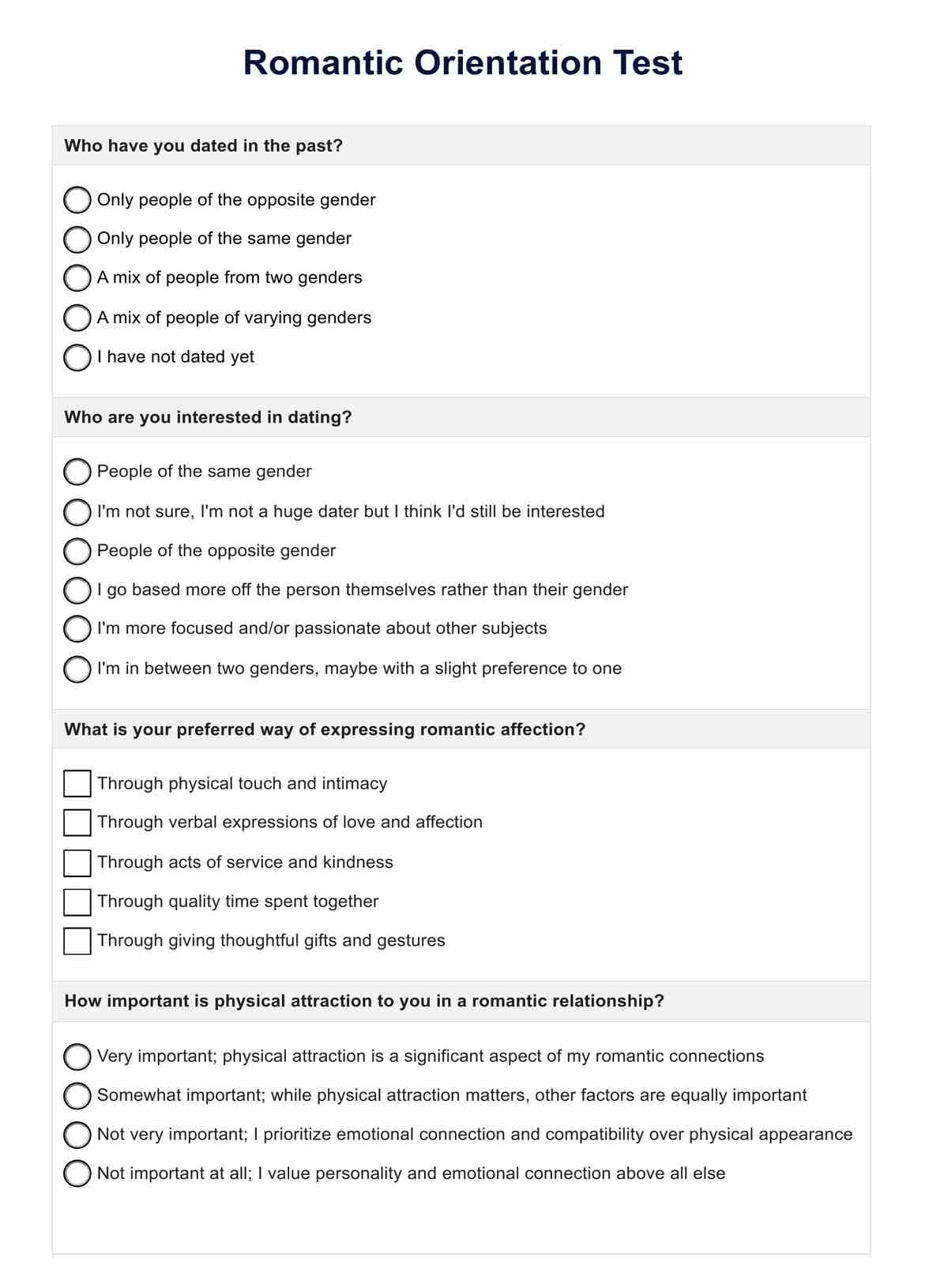Romantic orientation pertains to the gender(s) to which an individual is romantically attracted, focusing on emotional connections. Sexual orientation, on the other hand, refers to the gender(s) to which an individual is sexually attracted.

Romantic Orientation Test
Learn about various examples of romantic orientations and how the Romantic Orientation Test works. Download a free PDF example and explore the benefits.
Romantic Orientation Test Template
Commonly asked questions
Yes, an individual's romantic orientation may differ from their sexual orientation. For example, someone may be romantically attracted to individuals of a different gender while being sexually attracted to individuals of the same gender.
Romantic attraction often involves feelings of emotional connection, affection, and desire to form intimate relationships with another person. You may experience butterflies in your stomach, a longing to spend time with someone, or a desire to nurture and support them emotionally.
EHR and practice management software
Get started for free
*No credit card required
Free
$0/usd
Unlimited clients
Telehealth
1GB of storage
Client portal text
Automated billing and online payments











